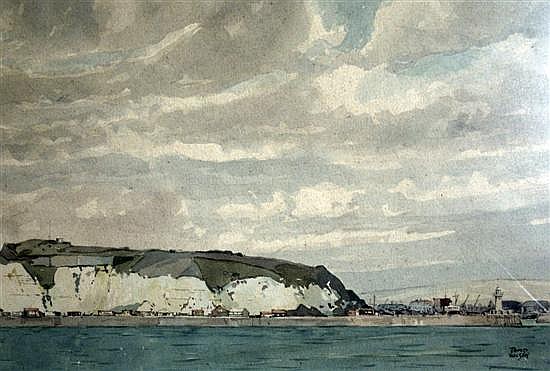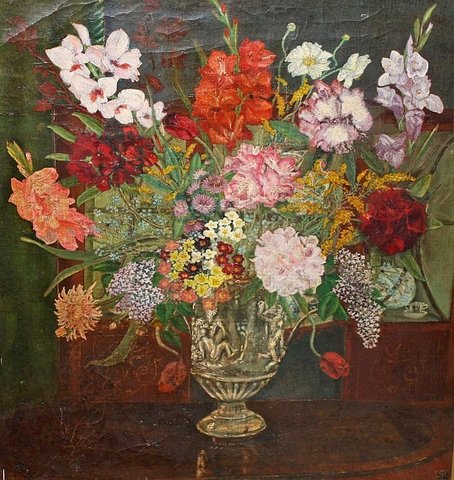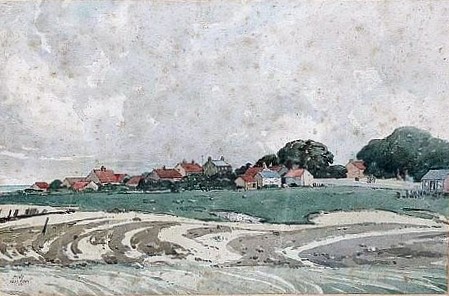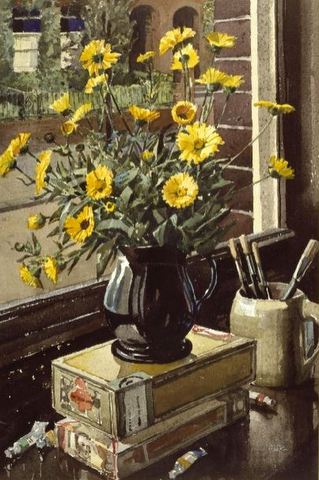WILSON, David
David Ernest Wilson was born at Ballymagran, Co. Tyrone, Ireland on 4 July 1872, third son of Revd Andrew James Wilson (1841-1920), a minister, and his wife Isabella Moffat née Thompson (1848-), his father took up a post at Malone Presbyterian Church, Belfast where David grew up. David was educated at the Royal Belfast Academical Institution and on leaving school, worked for the Northern Bank, taking evening classes at the Government School of Art and joined the Belfast Art Society. During the 1890s he met Alfred Stewart Moore (1871-1961), aka 'Nomad', contributing to his satirical magazine 'Nomad's Weekly' and Wilson's first cartoon was published in the 'Daily Chronicle' in 1895 and in 1899 he began contributing a regular full-page caricature to another Belfast weekly 'The Magpie'. In 1890 David married Edith Mary Magean (14 October 1870-1913) and they moved to London, where Wilson studied at the Sphinx Studio. They had two children James [Jimmy], born in 1900 and Edith [Peggy] in 1908, and in 1911 they were living at 22 Downton Avenue, Streatham Hill, Wandsworth, London. His wife Edith became an alcoholic and died in 1913, and on 3 July 1915 Wilson married secondly at St Margaret's Church, Streatham Hill, Frances Winifred James (1880-1954), daughter of the late John James, a solicitor. Wilson contributed fifty-five cartoons to 'Punch' 1900-1933, his work taking on influences from Japanese prints and German Jugendstil/Art Nouveau illustration. From 1910 to 1916 he was chief cartoonist for 'The Graphic', and from 1912 his cartoons appeared regularly in the 'Daily Chronicle' also contributing to 'Nomad's Weekly', 'Fun', 'London Opinion', 'The Sketch', 'The Star', 'Temple Magazine', 'Life' and 'Tatler' and his work continued to appear in publications like 'The Passing Show', 'The World' and 'Pan' until 1920. From the 1920s his reputation as a painter developed, concentrating on landscapes and flowers, in watercolour. He became an associate of the Royal Society of British Artists in 1924 and elected a full member in 1926, the year that he exhibited 'The Skeleton Pier, Walberswick', a Suffolk village where he spent a considerable time until his death. He also exhibited at the Royal Academy 1924-1934 including 'Blythburgh, Suffolk' in 1924 and 'The Old Pier, Blythburgh' in 1932. He was also member of the Royal Institute of Painters in Water Colours from 1931, the Savage Club, and the Newspaper Press Fund and taught at St John's Wood School of Art from his South London home. Books he illustrated include Arthur Waghorne's 'Through a Peer Glass: Winnie's Adventures in Wastemonster' (1908), 'A Song of the Open Road and other verses' by Louis J. McQuilland (1916), and 'Wilhelm the Ruthless' by A. A. Braun (1917) and he illustrated propaganda posters for the government during the First World War. David Ernest Wilson died at 22 Downton Avenue, Streatham Hill, Surrey on 2 January 1935, leaving his effects to his widow Frances Winifred Wilson, who also exhibited from 22 Downton Avenue, Streatham Hill at the Royal Academy in 1924 (850) a watercolour 'Primroses' and in 1928 (714) and oil 'Still Life'.
Royal Academy Exhibits
from 22 Downton Avenue, Streatham Hill, Southwest London
1924 791 A Spring Bunch - watercolour
825 Blythburgh, Suffolk - watercolour
1925 644 Cinerarias - watercolour
761 Boglands, Co. Tyrone - watercolour
1926 658 Southwold from Walberswick - watercolour
670 Primrose and Primula - watercolour
1927 760 Camelias - watercolour
847 Delphiniums - watercolour
1928 766 Phlox - watercolour
812 The Yellow Bowl - watercolour
1929 750 Cherry Blossom - watercolour
1930 810 Yellow Roses - watercolour
836 Sweet Peas - watercolour
1931 925 An Autumn Bunch - watercolour
1932 736 Old Pier, Walberswick - watercolour
902 Roses - watercolour
1934 919 Tarring Neville, Sussex - watercolour
Works by This Artist

|
Cliffs at NewhavenOil on canvas
|

|
Colourful Flowers on a LedgeOil on canvas
|

|
Walberswick, SuffolkWatercolour
|

|
The Window SillWatercolour
|